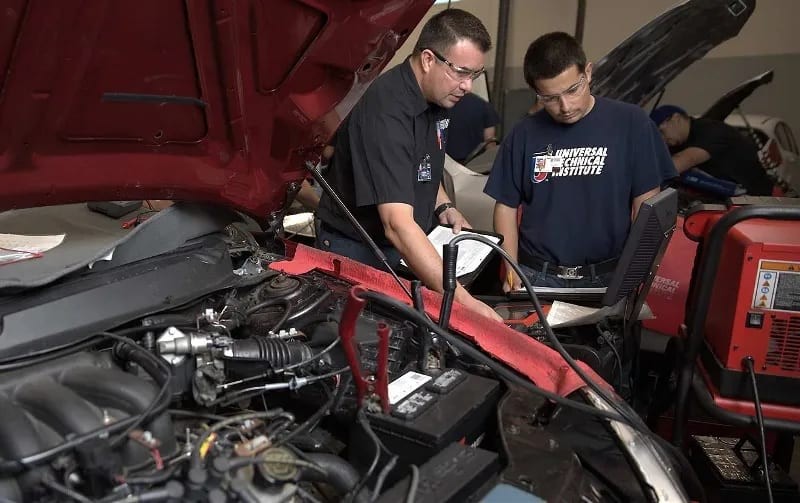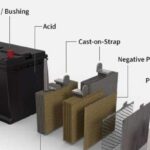Understanding the basic components of your car is more than just automotive trivia; it’s practical knowledge that empowers you as a vehicle owner. Knowing how the Major Parts Of A Car function can transform you into a more informed consumer, especially when it comes to vehicle maintenance and repair. Imagine being able to confidently discuss issues with your mechanic, understanding their explanations and making informed decisions about your car’s care.
While we’re not suggesting you need to become a master mechanic overnight, gaining familiarity with the major parts of a car is invaluable. This knowledge equips you to troubleshoot minor problems, communicate effectively with technicians, and ultimately become a more responsible and proactive car owner.
Let’s dive into the essential components that keep your vehicle running smoothly.
Essential Car Components and Their Functions
Building a foundational understanding of the major car parts and their roles is the first step towards automotive literacy. This knowledge will serve you well, whether you’re dealing with routine maintenance or unexpected repairs.
Engine
The engine is undeniably the heart of any vehicle. Whether it’s a traditional internal combustion engine or a modern electric motor, its primary function is to generate the power that propels your car. Most cars on the road today utilize internal combustion engines, which create energy by burning a mixture of air and fuel.
Alternatively, electric vehicles (EVs) are powered by electric motors that draw energy from rechargeable batteries. Electric motors are known for delivering instant torque, often resulting in quicker acceleration compared to their gasoline counterparts. Regardless of the type, engine or motor, it’s the driving force behind your vehicle’s movement.
Battery
Your car’s battery is critical for starting the engine and powering all of its electrical systems. It provides the initial jolt of electricity needed to crank the engine when you turn the key. Beyond starting the car, the battery also ensures that essential electrical components like your headlights, radio, and onboard computer systems function correctly.
A failing battery can leave you stranded, waiting for a jump start. Be alert for warning signs like a clicking sound when you turn the ignition or dimming headlights, as these could indicate a weakening battery. Regular battery checks can prevent unexpected breakdowns.
Alternator
The alternator is a generator that keeps your car battery charged while the engine is running. It converts mechanical energy from the engine into electrical energy, ensuring a constant power supply for your vehicle’s electrical systems and recharging the battery as you drive. This continuous charging process is vital for keeping your car running smoothly and preventing the battery from dying mid-journey.
Symptoms of a failing alternator often mirror those of a dying battery, such as dimming headlights and difficulty starting the engine. Ignoring alternator issues can lead to battery problems and potentially leave you stranded. Prompt attention to these symptoms can prevent more significant problems down the road.
Brakes
Brakes are arguably the most critical safety system in your vehicle. They are responsible for slowing down, stopping, and holding your car stationary when parked. Modern cars primarily use either disc brakes or drum brake systems.
Disc brake systems consist of calipers, rotors, and brake pads, while drum brake systems use brake drums and shoes. All brake components are subject to wear and tear over time. Any unusual noises, changes in brake pedal feel, or reduced braking performance should prompt an immediate brake inspection to ensure your safety on the road.
Radiator
The radiator is a key component of your car’s cooling system, essential for managing engine temperature. As your engine operates, it generates a significant amount of heat. The radiator’s job is to dissipate this heat from the engine coolant before the coolant is recirculated back to cool the engine again.
The radiator prevents your engine from overheating, which can lead to serious damage and costly repairs. Maintaining proper coolant levels and periodically checking your radiator for leaks or damage are simple but effective ways to ensure your engine runs at its optimal temperature and prolong its lifespan.
Transmission
The transmission, often referred to as the gearbox, is responsible for transferring power from the engine to the wheels. It acts as an intermediary, managing the engine’s output and directing it appropriately to the drive wheels to move the vehicle. Without a functioning transmission, the power generated by the engine would not be effectively utilized to propel the car.
Transmissions come in two main types: manual and automatic. Manual transmissions require the driver to shift gears using a gear lever and clutch pedal, while automatic transmissions shift gears automatically based on speed and engine load. Regular transmission fluid changes, as recommended by the manufacturer, are crucial for maintaining the transmission’s health and preventing premature wear.
Shock Absorbers
Shock absorbers are vital components of your car’s suspension system, designed to provide stability and a smooth ride. The suspension system as a whole works to isolate the car’s body from road irregularities, minimizing bumps and vibrations felt by the occupants. Shock absorbers specifically control the movement of the suspension springs.
By dampening the oscillations of the springs, shock absorbers ensure that your tires maintain consistent contact with the road surface. This is critical for safe handling, effective braking, and preventing uneven tire wear. Worn shock absorbers can lead to a bouncy ride, vibrations, and compromised handling, highlighting the importance of their proper function.
Catalytic Converter
The catalytic converter is an integral part of your car’s exhaust system, playing a crucial role in emissions control. As your engine burns fuel, it produces exhaust gases containing harmful pollutants. The catalytic converter’s job is to convert these harmful compounds into less harmful gases before they are released into the atmosphere through the tailpipe.
A malfunctioning catalytic converter can lead to increased emissions, reduced engine performance, and decreased fuel efficiency. Maintaining a properly functioning catalytic converter is not only important for environmental responsibility but also for ensuring your vehicle operates efficiently and passes emissions tests.
Components of a Car & Their Functions FAQs
How are car parts labeled or identified?
Car parts are labeled and identified using several methods to ensure accurate identification for inventory, replacement, and repair. Manufacturers typically assign unique part numbers to each component. These part numbers, along with OEM (Original Equipment Manufacturer) or aftermarket labels, are crucial for distinguishing parts. Modern parts often include barcodes or QR codes for efficient tracking and management throughout the supply chain and during servicing.
How many parts are in a car?
The number of parts in a typical car is surprisingly high, ranging from 30,000 to 40,000 individual components. The exact number varies significantly depending on the vehicle’s complexity, model, and features. This vast number underscores the intricate engineering and manufacturing involved in assembling a modern automobile.
Learn Even More About Parts of a Car at UTI
Now that you’ve gained a basic understanding of essential car parts, are you interested in deepening your automotive knowledge? This curiosity might indicate a potential career path as an automotive technician, a profession where you can work hands-on with these components daily!
At Universal Technical Institute (UTI), our Automotive Technology program is designed to provide you with the comprehensive knowledge and practical skills needed to maintain and repair both domestic and import vehicles. We also offer specialized automotive training programs in partnership with leading automotive brands. From engine diagnostics to advanced emissions control, our courses provide valuable hands-on training, preparing you for a rewarding career in the automotive industry.
Our accelerated programs allow you to graduate in less than a year, equipping you with the qualifications to pursue a fulfilling career and even handle your own car repairs with confidence.
Want to explore your options? Request more information from an Admissions Representative or call 1-800-834-7308.
UTI Campuses That Offer Automotive Technician Training
START YOUR CAREER AS A MECHANIC OR TECHNICIAN TODAY.
With new classes starting every 3-6 weeks, you don’t have to wait to begin your training.
Hands-on training. Gain practical experience with equipment from industry-leading brands.
No Obligation. Get all your questions answered without any pressure to enroll.
Related Articles
[
Advancing vs. Retarding Ignition Timing: Key Differences](/blog/automotive/ignition-timing)Ignition timing significantly impacts engine performance. Discover how it works and the differences between advancing and retarding ignition timing!
]
[
The Difference Between an Automotive Mechanic and an Automotive Technician](/blog/automotive/the-difference-between-a-mechanic-and-an-automotive-technician)Understand the distinctions between an automotive mechanic and an automotive technician and why these differences are important.
]
[
ASE Certification: How To Become ASE Certified (Definitive Guide)](/blog/tips/mechanic-path-ase-certification)ASE certifications can significantly enhance the careers of automotive, diesel, and collision repair technicians. Learn about the benefits and how to achieve ASE certification.
]
Disclaimer:
1 ) UTI is an educational institution and cannot guarantee employment or salary.
2 ) For program outcome information and other disclosures, visit www.uti.edu/disclosures.
7 ) Some programs may require longer than one year to complete.
18 ) UTI now offers blended-learning formats with online lectures and in-person lab training for automotive, diesel, motorcycle, and marine technician programs.
Universal Technical Institute of Illinois, Inc. is approved by the Division of Private Business and Vocational Schools of the Illinois Board of Higher Education.

